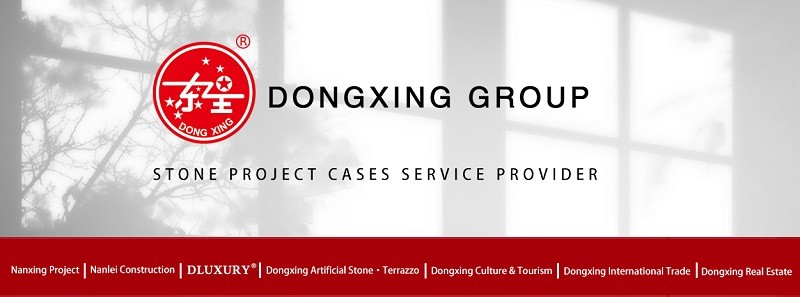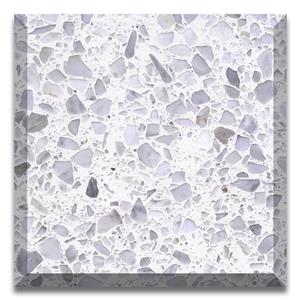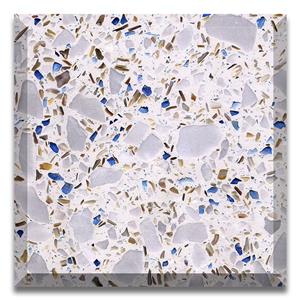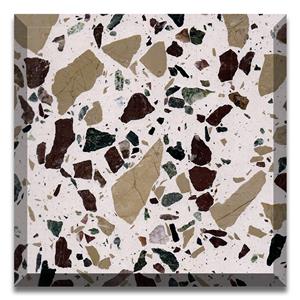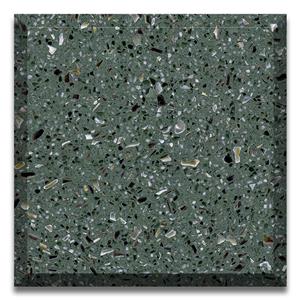Choosing Inorganic Terrazzo Flooring for High-Traffic Spaces

Choosing Inorganic Terrazzo Flooring for
High-Traffic Spaces
When it comes to designing public areas such as airports, hotels, subway stations, and shopping centers, the choice of flooring plays a huge role in both style and long-term durability. Terrazzo flooring has become one of the most reliable and attractive options for these high-traffic spaces. Its unique mix of strength, design flexibility, and easy care makes it stand out among other flooring materials.
But before you decide, it's important to understand what is terrazzo, what makes it ideal for heavy use, and how modern inorganic terrazzo tiles differ from traditional resin-based ones.
What Is Terrazzo?
Terrazzo is a composite material made by mixing marble, quartz, granite, or other stone chips with a binder. Once poured and polished, it forms a smooth, strong, and decorative surface. The technique dates back to ancient Italy, but it has evolved over centuries into a highly practical flooring solution.
Traditional terrazzo often used cement or epoxy resin as the binding material. However, newer inorganic terrazzo—which uses no resin at all—has become increasingly popular for commercial projects. This type of terrazzo is made entirely from inorganic materials, offering superior fire resistance, environmental benefits, and long-lasting beauty.
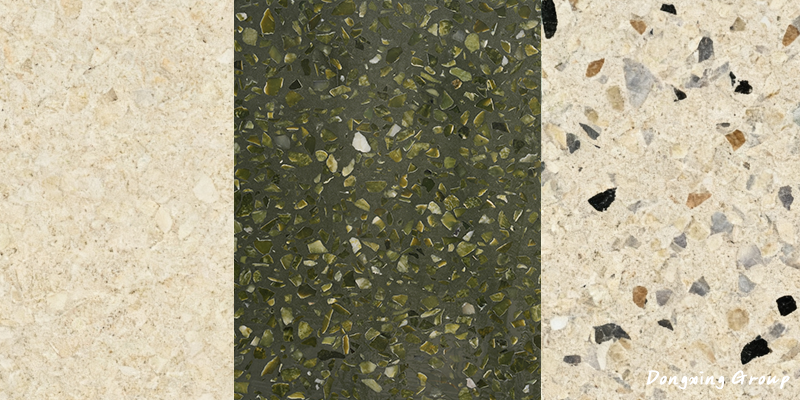
Why Choose Inorganic Terrazzo for High-Traffic Areas?
In busy environments, flooring must resist heavy wear, constant foot traffic, and frequent cleaning. Inorganic terrazzo provides several key benefits that make it ideal for such conditions.
1. Exceptional Durability
Inorganic terrazzo is dense and extremely hard. It doesn't crack or deform easily, even after years of use. Unlike resin-based terrazzo, it does not soften or discolor under heat or sunlight, making it perfect for both indoor and outdoor spaces.
2. Easy Maintenance and Polishing
Terrazzo floor polishing is simple and can restore the surface to a like-new shine even after years of use. Daily cleaning only requires neutral detergent and water. Because the surface is smooth and non-porous, it resists stains and bacterial growth, keeping public areas clean and safe.
3. Long-Term Value
While the initial cost of terrazzo may be higher than some other materials, its extremely long life cycle and minimal maintenance costs make it one of the most cost-effective flooring choices over time. Many buildings with terrazzo floors have maintained their beauty for decades.
4. Eco-Friendly Choice
Since inorganic terrazzo contains no resin or volatile organic compounds (VOCs), it's a green and safe material. Its components—stone chips, mineral binders, and natural pigments—are recyclable and environmentally friendly. For projects with strict green building standards, inorganic terrazzo easily meets sustainability goals.
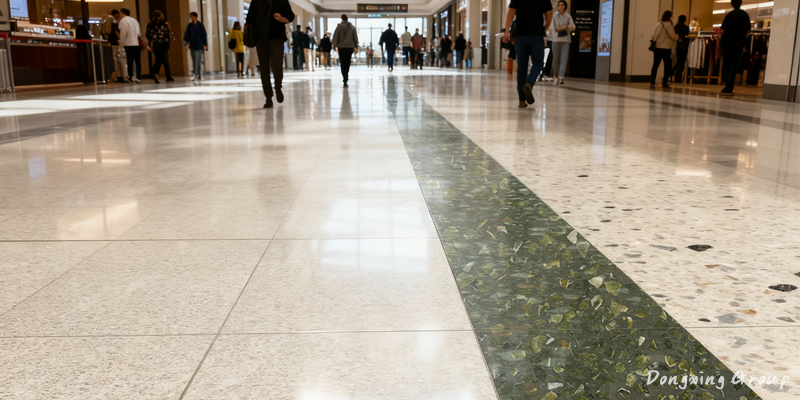
Terrazzo Tiles vs. Traditional Flooring
Modern terrazzo tiles are prefabricated slabs made under high pressure, ensuring consistent quality and easier installation. Compared to on-site poured terrazzo, terrazzo tiles save time, reduce labor costs, and simplify construction logistics.
Let's compare terrazzo tiles with other common flooring materials:
| Material | Durability | Maintenance | Eco-Friendly | Lifespan |
| Inorganic Terrazzo | ★★★★★ | Easy | Yes | 40+ years |
| Ceramic Tile | ★★★ | Medium | Partial | 10–15 years |
| Vinyl | ★★ | Hard to maintain | No | 5–10 years |
| Epoxy Terrazzo | ★★★★ | Easy | Limited | 15–25 years |
As shown, inorganic terrazzo ranks highest in durability and environmental performance, making it a preferred choice for long-term commercial flooring.
Applications of Terrazzo Flooring
Terrazzo flooring can be found in many types of high-traffic spaces, such as:
Airports and train stations – for durability and ease of cleaning
Shopping malls and hotels – for luxurious design and smooth finishes
Hospitals and schools – for hygiene and low maintenance
Office buildings and lobbies – for elegant, modern appearance
With its flexibility in color, pattern, and finish, terrazzo can match almost any architectural style—from classic to minimalist.
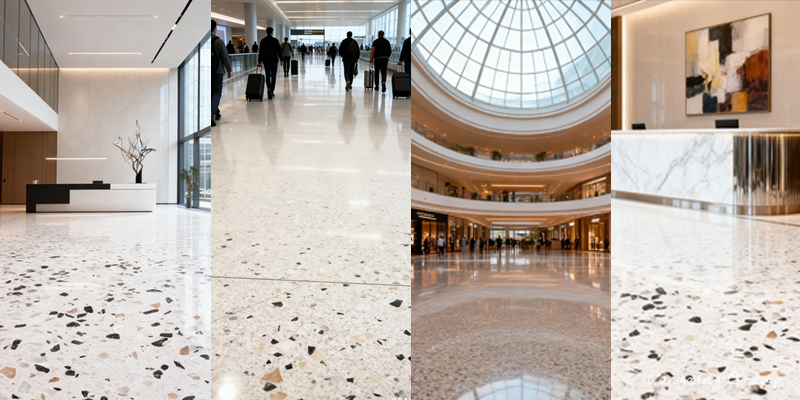
Color and Design Options
Because terrazzo uses stone chips and pigments, it offers nearly endless design possibilities. From white marble terrazzo to colorful granite mixes, each tile can be tailored to fit your project's visual identity.
Manufacturers can adjust the ratio and size of stone chips to achieve different looks—smooth and uniform for a minimalist design or bold and textured for a more artistic szpace.
If you're looking for terrazzo marble supply, many producers now offer ready-made slabs and tiles in various shades and finishes. These can be easily cut and installed on floors, walls, or stairs.
How to Maintain Terrazzo Flooring
Proper care ensures terrazzo retains its beauty for decades.
Here are simple steps to maintain your terrazzo floor:
Daily cleaning: Use a soft mop and neutral cleaner. Avoid strong acids or alkalis.
Regular polishing: Perform terrazzo floor polishing every 6–12 months, depending on traffic volume.
Protective pads: Place mats at entrances to prevent sand or gravel from scratching the surface.
Sealing: Apply a protective sealer periodically to prevent stains and water absorption.
These easy steps help extend the floor's life and keep it looking elegant year after year.
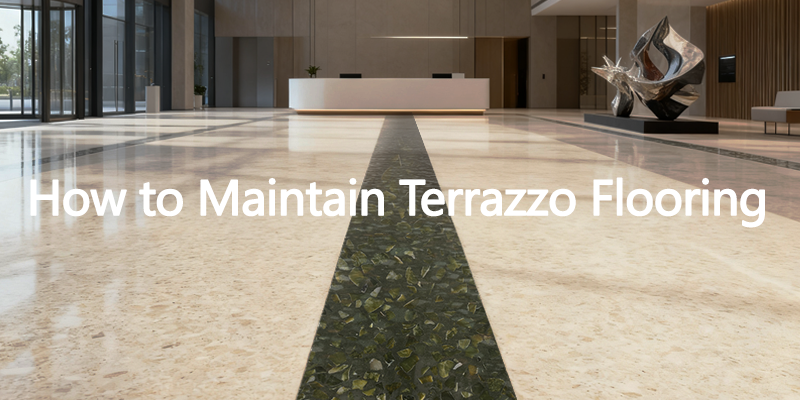
The Future of Terrazzo Flooring
As architects and builders focus more on green materials and long-term performance, inorganic terrazzo is becoming the go-to choice for modern construction.
Its blend of beauty, durability, and low environmental impact positions it as one of the most advanced flooring materials available today.
Whether you're working on a transportation hub, commercial complex, or residential project, terrazzo offers both style and substance. It’s not just a flooring option—it's an investment in timeless design.
Conclusion
Choosing terrazzo for high-traffic spaces is a decision that combines aesthetics, practicality, and sustainability.
With inorganic terrazzo tiles, you get a surface that's elegant, extremely strong, and easy to care for—without the drawbacks of resin-based materials. From design freedom to long-term durability, terrazzo continues to prove why it's one of the best choices for modern architecture.
